Calabash Tree
Scientific name: Crescentia cujete
POWO Status: Tree
IUCN Red List threat level: Least Concern
GPS Location: 17° 42′ 54.09″ N, 64° 49′ 48.75″ W
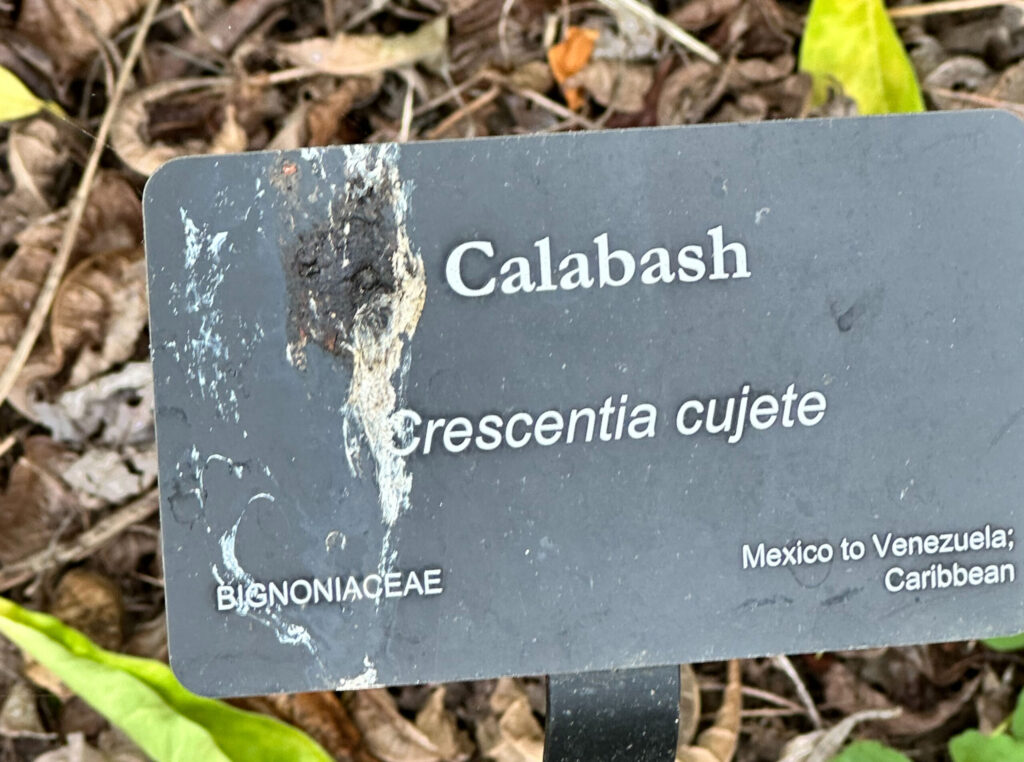
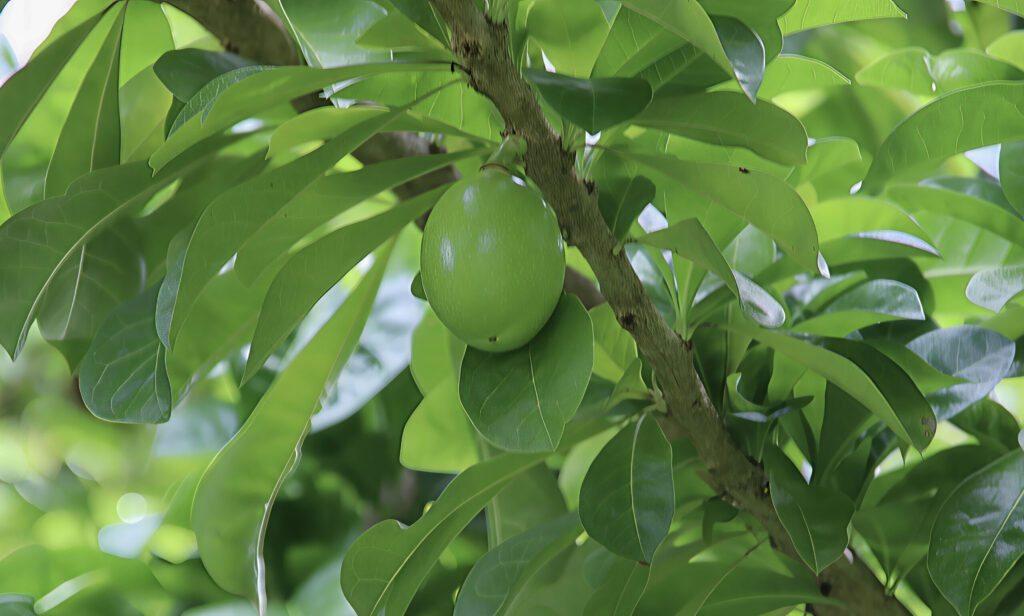
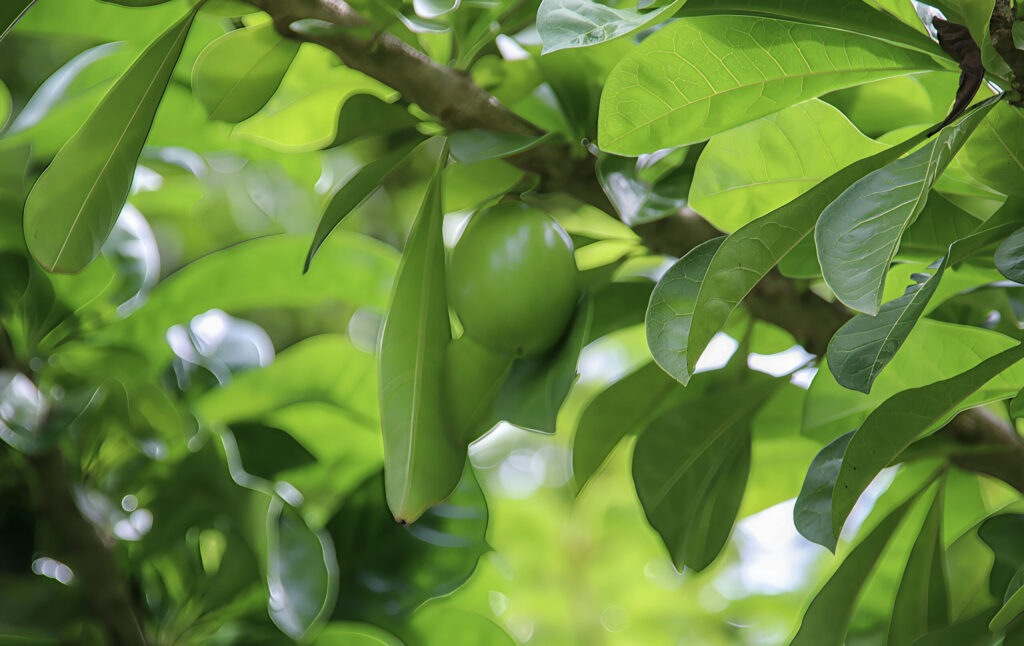
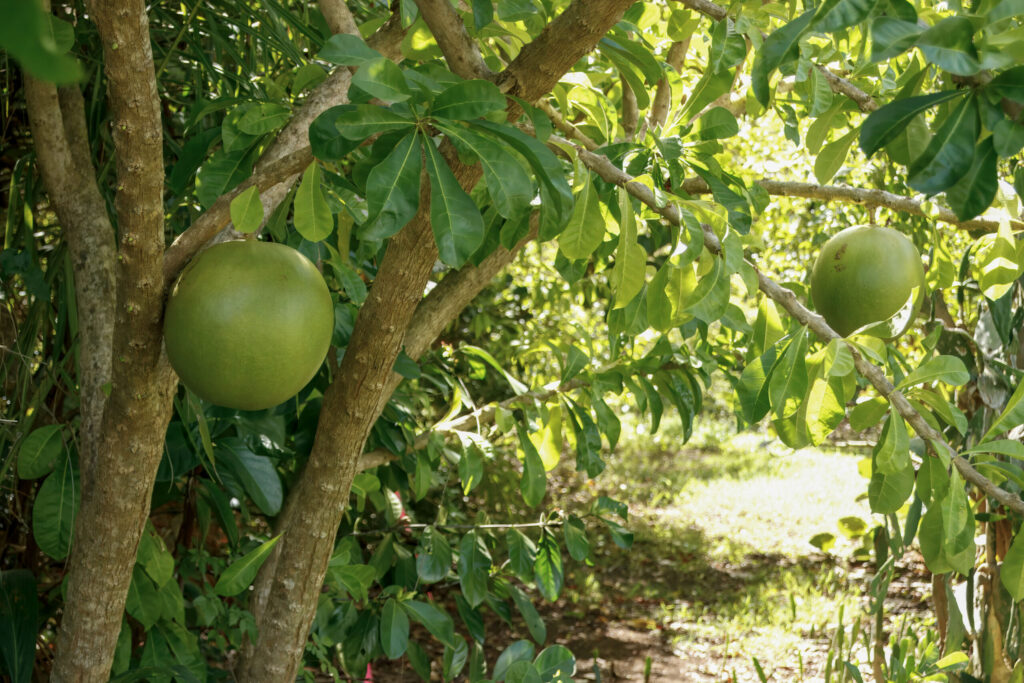
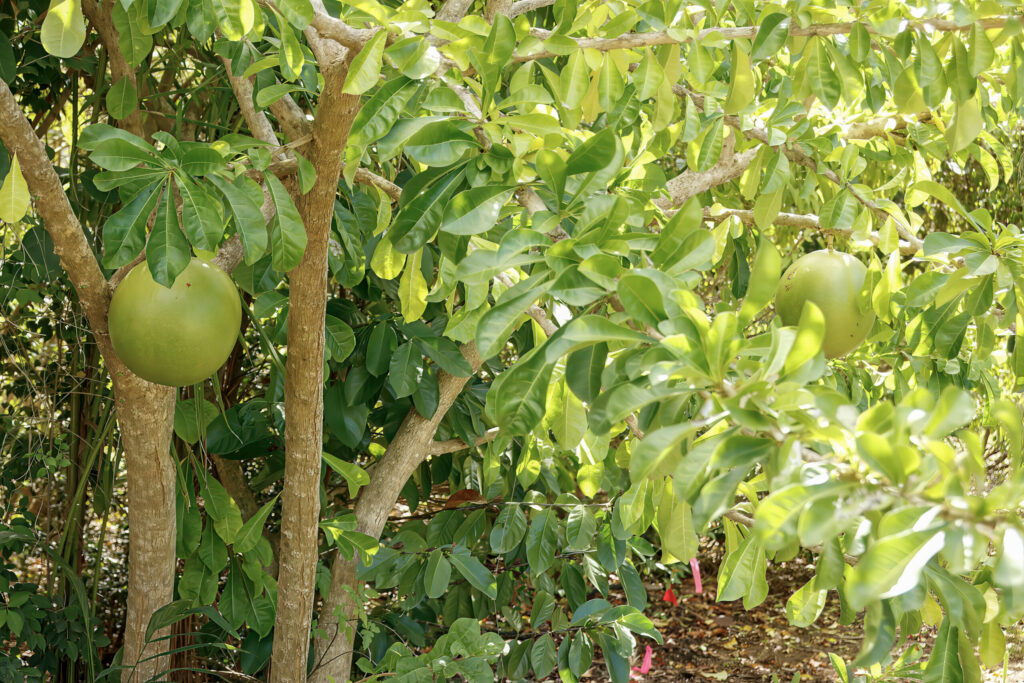
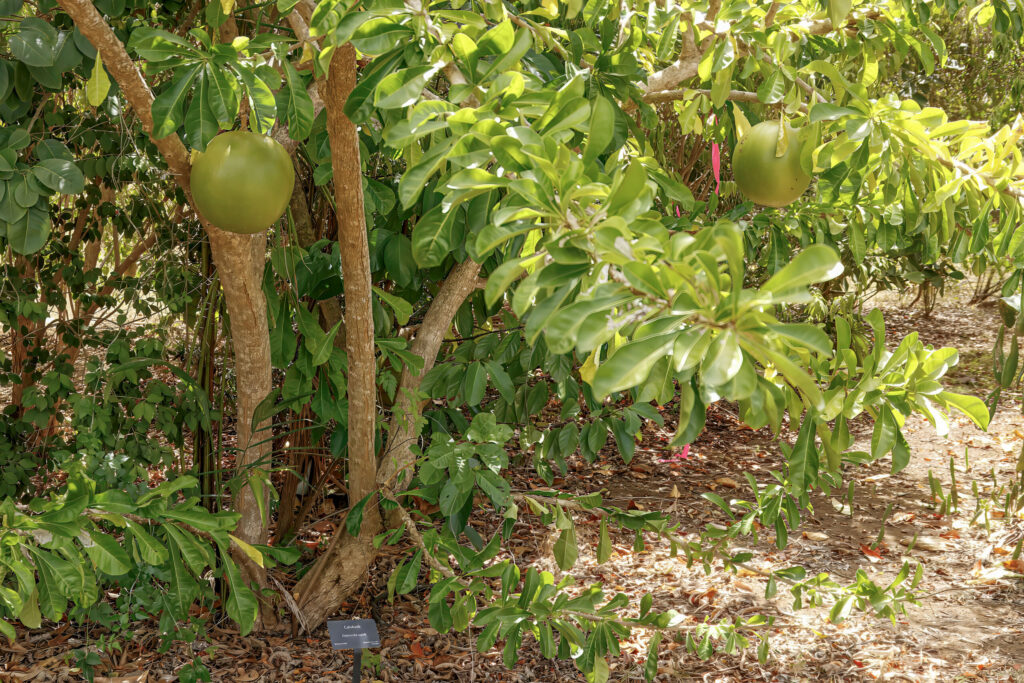
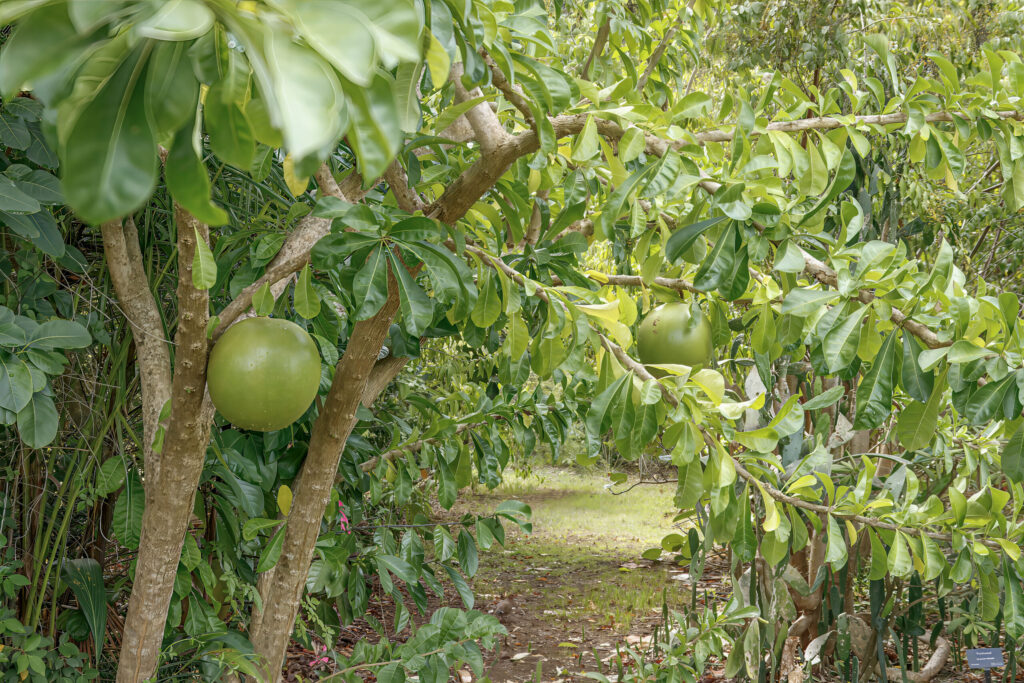
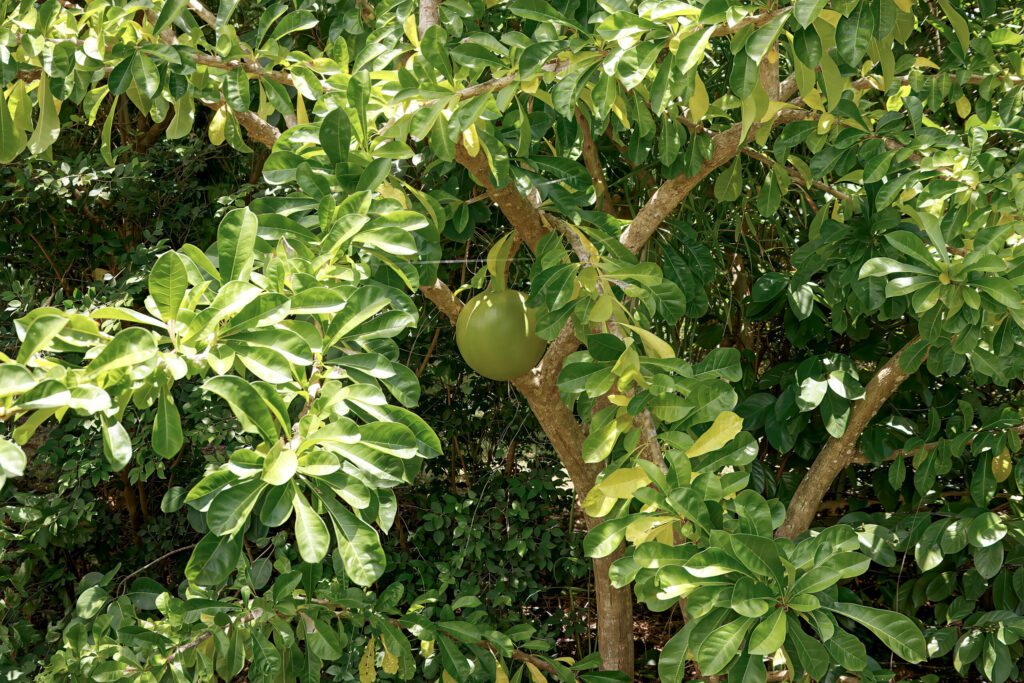
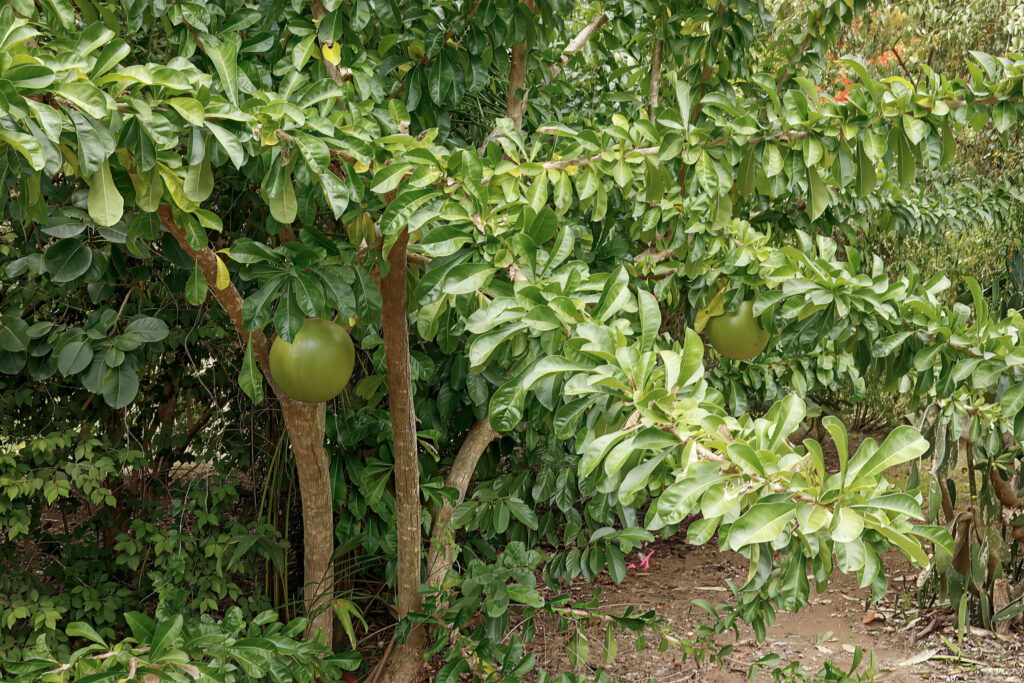
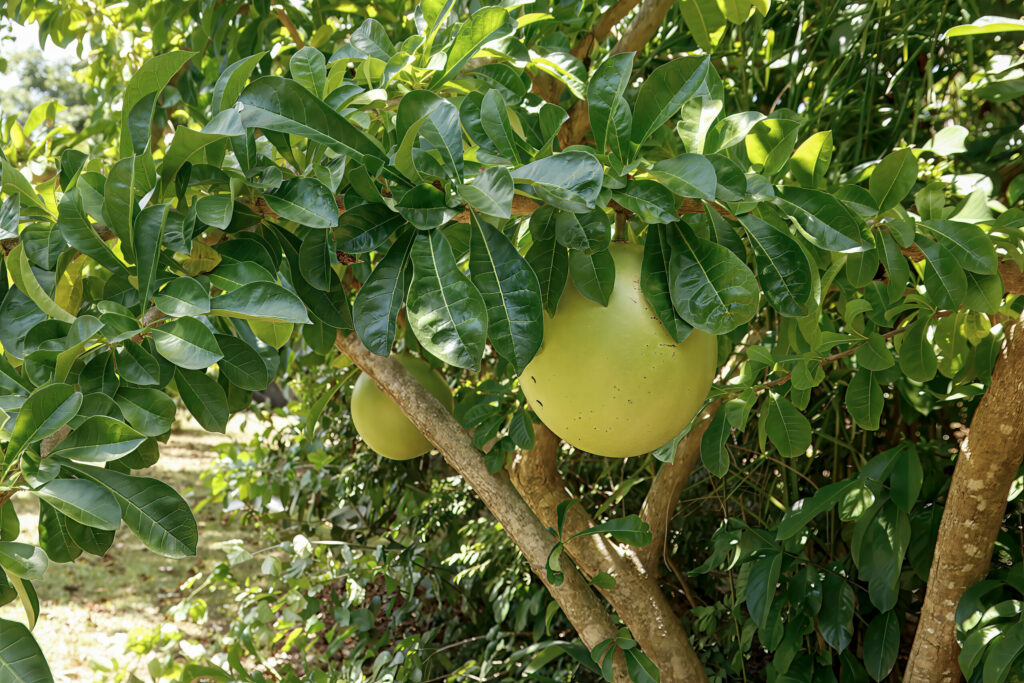
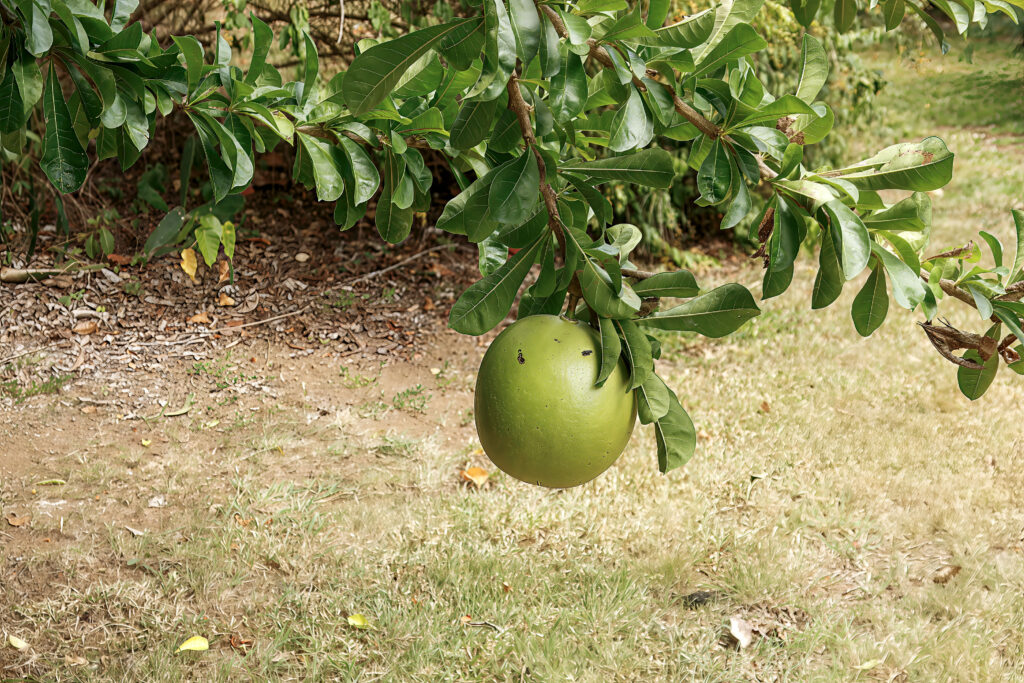
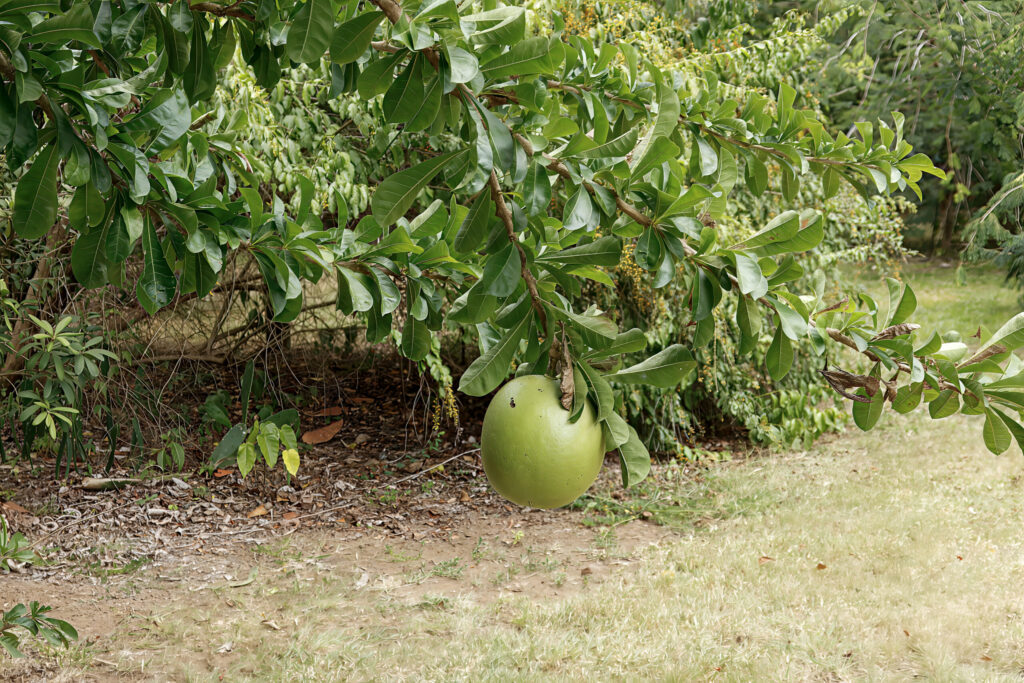
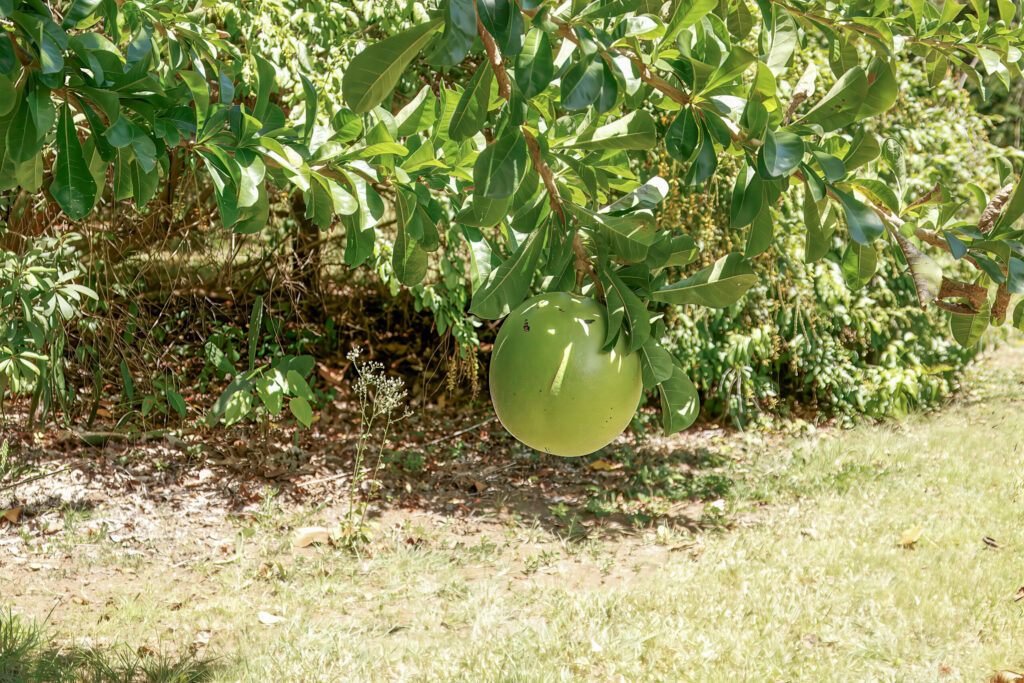





















Observations:
Phenological Markers – Calabash Tree (Crescentia cujete)
1. Flowering
The Calabash Tree produces greenish-yellow to purplish, bell-shaped flowers, often with dark veining and a slightly waxy texture. What makes it especially unique is its cauliflorous habit:
- Flowers grow directly from the trunk and larger branches, not the outer canopy.
- Flowering can occur throughout the year in tropical climates, but it may peak during the late dry to early wet season (March–May) in St. Croix.
- Flowers are bat-pollinated, opening in the late afternoon or early evening and lasting only a day.
Observation Tips:
- Look closely at the trunk and main limbs for buds and blossoms.
- Record time of day flowers appear and wither.
- Observe and note any pollinator activity at dusk or dawn.
2. Fruiting
After flowering, the tree develops large, round, hard-shelled fruits (gourds), often 6–10 inches in diameter.
- Fruits develop slowly and may remain on the tree for 6–9 months before maturing.
- The hard shells are green when immature, becoming brownish and woody as they ripen.
- Fruits do not split open; instead, they are dispersed by gravity or harvested by humans for use in utensils, crafts, or containers.
Observation Tips:
- Track fruit size, surface texture, and color over time.
- Note hanging duration—some trees carry fruit almost year-round.
- Fallen gourds may remain intact for weeks and are slow to decompose.
3. Leaf Behavior
Leaves are simple, oblong, and bright green, often arranged in small clusters along branches.
- The Calabash Tree is semi-deciduous, sometimes shedding older leaves during the dry season.
- Leaf flushes follow flowering and fruit set, with young leaves appearing more delicate and lighter in color.
Observation Tips:
- Document leaf drop in late dry season, especially during flowering.
- Note new growth around the time of fruit development or early rains.
4. Seasonal Pattern (St. Croix)
- Jan–Mar: Occasional leaf drop
- Mar–May: Peak flowering
- Apr–Jul: New leaf flush + early fruit formation
- Jul–Dec: Fruit development and hanging phase
- Year-round: Sporadic flowering and fruiting may occur in mature trees
